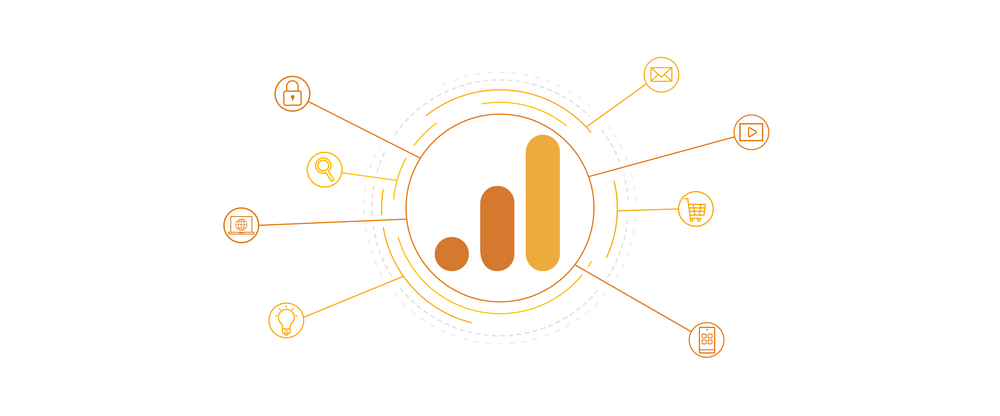7 Key Differences Between Google Analytics 4 & Universal Analytics

On October 14, 2020, Google introduced Google Analytics 4 (GA4). This is the result of the beta “App + Webb” and now the default experience when you create a new property. GA4 is the biggest update in the 15-year history of the tool and represents the future of Analytics. So, the earlier you start working with GA4, the sooner you will understand its benefits.
The best approach right now is to run GA4 in parallel with your existing Universal Analytics (UA) implementation. You should continue to use UA as your “source of truth” until you have collected sufficient historical data in GA4 to support your analysis needs. Although the new version is out of beta, Google still releases new features almost every week. In fact, Google recommends parallel tracking at the moment, which is important to have in mind when you create your new property.
So, what are the key differences between the old version and Google Analytics 4? Keep reading and find out.
All data in the same view
As we know, the user-journey is a bunch of different interactions happening and not only on your website. In GA4 all data is collected in the same view which will give you a much better understanding of your users’ behaviors. You can see what’s happening in your app and on your website in the same view.
Moving from a session-based data model to an event-based data model
Google Analytics is moving away from the measurement model that focuses on sessions and pageviews, instead, every interaction is categorized as an event. In GA4 you can still see session data, but Analytics collects user interactions with your website or app as events. It can collect and send pieces of information that more fully specify the action the user took or add further context to the event or user. This could be information like product dimensions or attributes of a purchase order, or the geographical location of a specific interaction.
Cross-device tracking
Today’s user-journey is complex, users often switch devices or profiles as they interact with your website. GA4 can measure a single user journey across devices based on different user identifiers. You can bring your own identifier for signed-in users, use Google’s signed-in data, the device id, or use them all.
Interface
One of the biggest changes is the interface. In Universal Analytics you had a lot of different readily available reports. But far from all were relevant in each project. In the new version, there’s more flexibility in what to track, and thus reports aren’t shown by default the same way as before. You need to tell Google Analytics what you are interested in seeing depending on your specific use case. May that be inspecting certain user-journeys, or analyzing new events- or user traits. With that said, the new version is better at giving you a deeper understanding of your users’ behaviors, but you need to put some work into your reports before you get there. The big question is how this will work for Analytics users without much experience or time? In my opinion, Google needs to add more default reports to make it easier for that group of users.
AI and Machine Learning
Google says that AI and Machine Learning is at the core of GA4. This will help Analytics users with automated insights and create forecasts. Even solve problems you might have had before when data didn’t completely match and therefore resulted in gaps. But thanks to machine learning, these gaps will be backfilled and the usefulness of your data will remain intact.
Analysis Hub
This analysis tool makes it easier to explore data, create custom funnels, compare segments, and conduct pathing analysis. For instance, pathing analysis allows Analytics users to explore the paths that visitors take on their websites and apps. If you worked with Universal Analytics before you might be familiar with the Behaviour Flow report, and I would say that this tool is an upgraded version for that kind of insight. The possibilities for this kind of analysis are big and really helpful in order to understand your users.
BigQuery Export
GA4 comes with an automatic BigQuery export of all your GA4 data. This feature was only available in Google Analytics 360 before but is now provided for free. That means you can stream all your data to BigQuery and use SQL for deeper analysis, based on that raw data. It lets you break free of the prescriptive reports imposed by GA4 and be more flexible.
Summary
Google Analytics 4 provides a more complete cross-channel view of the customer journey with the event-driven data model. It also provides many useful features that were only available for Analytics 360 users before.
The new version is the future of Analytics and I see no point holding off trying it out. There are some bugs and functionality still missing but this will improve over time. With the recommendations from Google to use both properties parallel at the moment, you can still have your old version as the “source-of-truth”. Start gathering data and explore the new benefits.
Please reach out to us if you have any thoughts or questions around GA4. With our expertise we can help you implement the new version and get started, define goals and conversions, and customize reports to match the needs of your business. We are happy to help!
